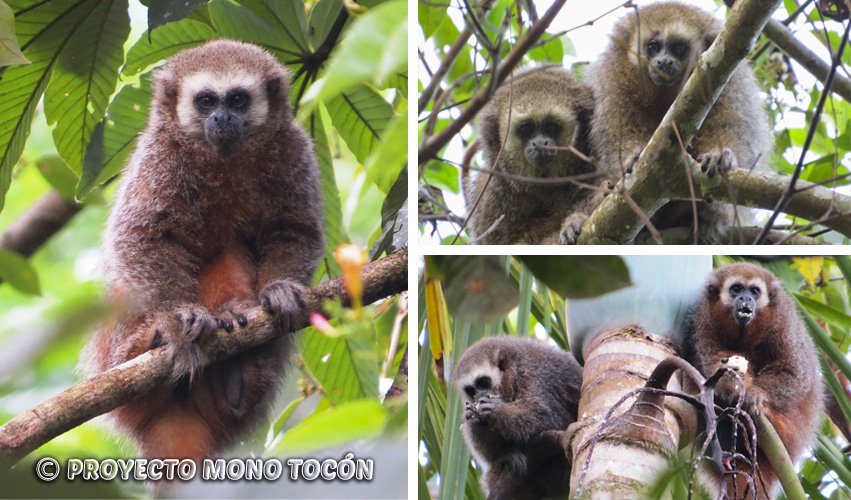042-353613
Follow Us:
Language: 
Early investigations mentioned that the species is found preferentially in tropical forests at altitudes between 750 and 950m.s.n.m., secondary and semi-flooded forests. Researchers made sightings near rivers or in flooded areas and suggested that this could indicate a preference of the species for this type of habitat. Proyecto Mono Tocón has been able to verify that the species is also distributed in areas far from water sources and even at a much lower altitude than initially considered (216m).
The species is found in the same region as two other endemic and threatened primates (the yellow-tailed woolly monkey, Lagotrhix flavicauda and the Andean night monkey, Aotus miconax). However, as these species are found at high altitudes, in the mountains surrounding the range of Plecturocebus oenanthe, they will rarely meet each other and do not live sympatric.
The titi monkeys or tocones, as they are known locally, are monogamous and live in small family groups. In the first ethological study carried out on the species, a group of 5 individuals (an adult couple and their three young) were investigated in an area of 2.5 hectares. This study has determined that the diet of the species is composed mainly of fruits (45%) and insects (39%), although the ingestion of seeds, leaves, flowers and shoots has also been observed (DeLuycker, 2007). Plecturocebus oenanthe of shares its habitat with the Andean saddle-back tamarin, Leontocebus leucogenys, and both species may benefit from spending time together.
The San Martin titi monkey can be found in the more common wet tropical forests of this region, but also seems to survive well in the last remaining fragments of dry tropical forests.
